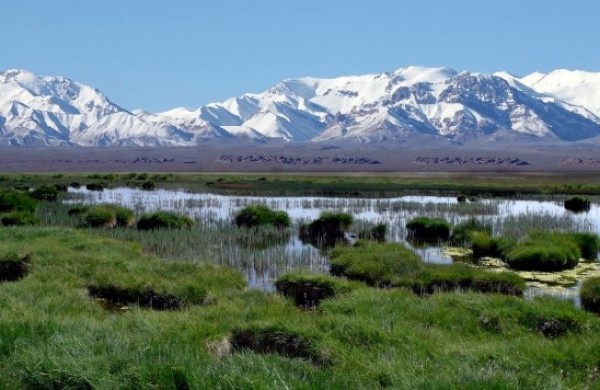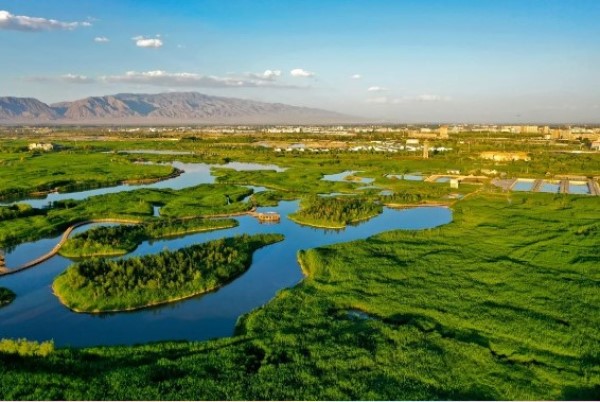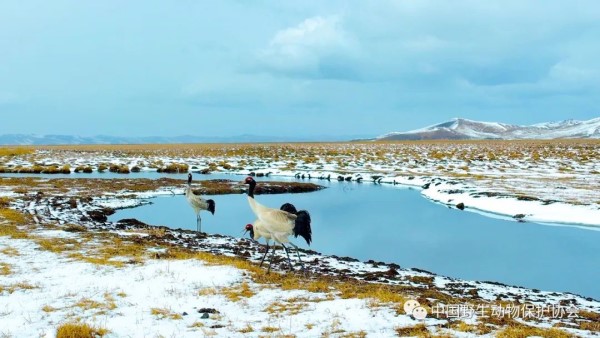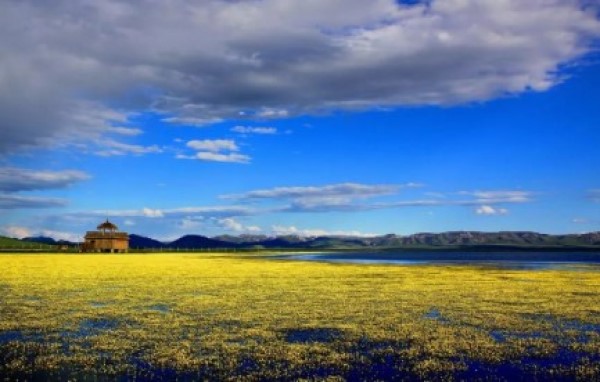Gansu boasts 1.19 million hectares of wetlands, ranking seventh in China and accounting for five percent of the country's total.

The Gansu Yanchiwan National Nature Reserve [Photo by Shai Yongjun]
Its four wetlands have been listed as Wetlands of International Importance, namely, the Gansu Zhangye Heihe River Wetlands, Gansu Yanchiwan National Nature Reserve, Gansu Gahai Wetlands Nature Reserve and the Gansu Yellow River Shouqu Wetlands.

The Gansu Zhangye Heihe River Wetlands [Photo by Cheng Lin]
Vibrant and species-rich ecosystems thrive in the wetlands. There are 1,270 species of wetland higher plants across the province, including 15 key protected and endangered species, such as the Metasequoia and wild soybean.
Statistics show that Gansu wetlands are home to 253 species of vertebrate, containing three animal species under national first-class protection - the black stork, black-necked crane, and the relict gull.

The Gansu Yellow River Shouqu Wetlands [Photo/China Wildlife Conservation Association]
Wetland resources are particularly precious to the arid inland plateau. It goes without saying that Gansu wetlands play an important role in conserving water sources and storing carbon. These precious water sources also help promote social and economic development and ensure people's livelihoods.
The Dunhuang West Lake Wetland, serving as the "lung of the Gobi Desert", is filled with sprawling views of distinctive vegetation. A sea of reeds, rose willow, lycium ruthenicum and populus euphratica complement each other in the wetlands, salt marshes and Yadan landforms form a picturesque frontier scenery.

The Gansu Gahai Wetlands Nature Reserve [Photo by Zhang Yong]
Gansu has always attached great importance to the protection of its resources. In recent years, Zhangye Heihe River National Wetland Park has invested 130 million yuan to build the first museum in Northwest China that integrates wetland science popularization, experience, collection and exhibition.
The Yanchiwan Wetland National Nature Reserve has continuously improved the quality of the ecological environment, attracting a large number of birds to spend the winter here each year.
